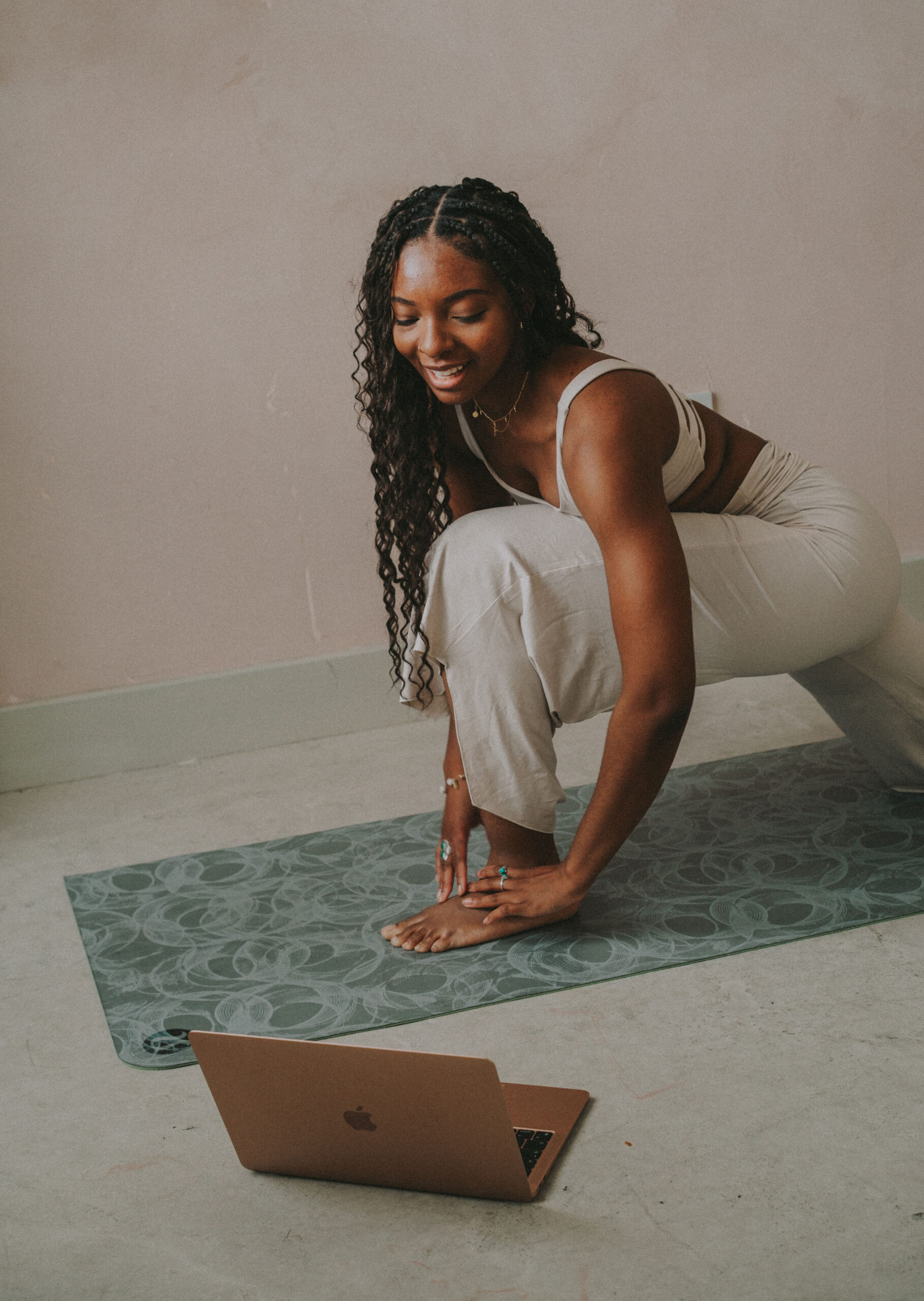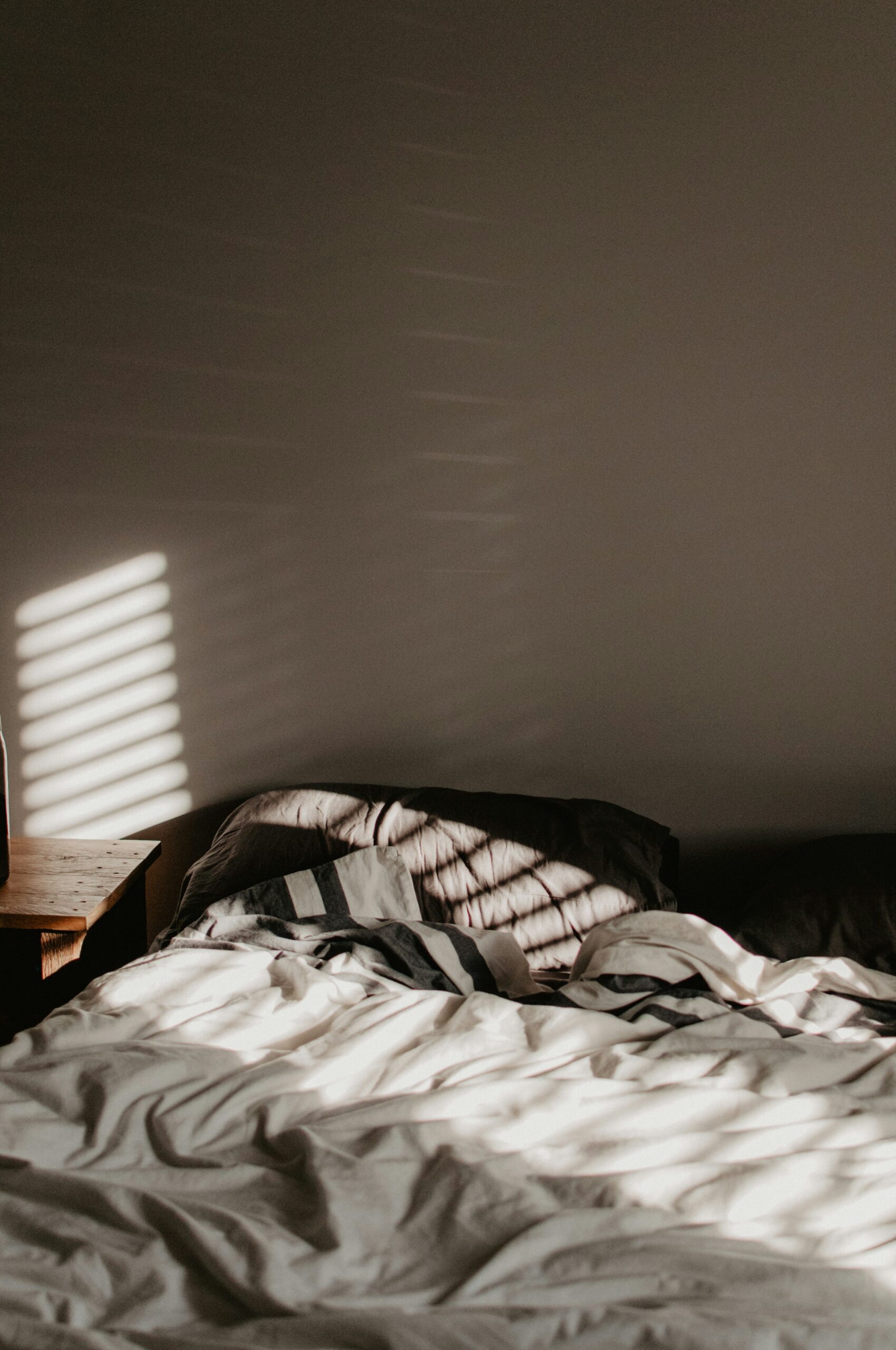I love sleep but… sometimes pressures and anxieties from the day make it hard to fall asleep, stay asleep and even enjoy our time asleep. The stress of a deadline or big presentation coming up; ruminating if I said the *right* thing in the *right* way at work or during a yoga class; dwelling on a mistake and berating myself for not knowing better. And just feeling that there’s never enough hours in the day to do *everything*. If this happens to you too, keep scrolling.
Sleep is a vital physiological process that allows the body and mind to rest, repair, and recharge. It is regulated by key pathways in the brain and our circadian rhythm that control our sleep-wake cycle. Several factors like stress, pressures of a fast-paced modern lifestyle, our diet and features of our environment such as exposure to light and darkness through the day can negatively affect our sleep. Sleep is broadly divided into two categories with further sub-stages through which we naturally cycle throughout the night: REM sleep (aka ‘active sleep) and NREM (aka ‘deep sleep’).
When the regulation of these sleep mechanisms and cycles is affected, our ability to fall asleep, stay asleep and quality of sleep is impaired. This can lead to irritability, low mood, poor memory, concentration difficulties and more which in the long run can cause mental and physical health problems.
Research suggests that yoga can positively impact our sleep by increasing vagal tone and activating the parasympathetic nervous system, which helps to calm the body and mind.
This leads to decreased levels of stress hormones circulating in the body, making it easier to relax and fall asleep.
Additionally, yoga encourages slow, deep breathing and a slower heart rate, mirroring the physiological changes that occur during NREM aka ‘deep’ sleep.
Incorporating yoga into your bedtime routine can also contribute to better sleep hygiene, and a set of practices that promote healthy sleep habits.
This includes establishing a regular sleep schedule, avoiding caffeine and heavy meals close to bedtime, and creating a relaxing sleep environment free from distractions.
Most adults need 7-9 hours of sleep a night, but what’s essential is to listen to your body and find a routine that works for you.
So, whether you have just a few minutes or a little longer, try adding these yoga poses to your nightly routine to help you unwind and prepare for a restful night’s sleep:
From a comfortable seated position, reach your arms overhead. Release your right hand down to the floor or a support (e.g. block) as you slowly lean to the right-hand side, stretching your side body.
Relax your neck and keep your chin slightly tucked. Hold for 3 to 5 breaths, then switch sides.
Place your right hand on the opposite knee (left) as you twist over to the left-hand side. Inhale to lengthen your spine, then exhale to twist further towards the back, placing your left hand behind you for support.
Try to twist using your chest without straining your neck to look back. Hold for 3 to 5 breaths, then switch sides.
Start on your hands and knees in a tabletop position, with your wrists under your shoulders and knees under your hips. Inhale to arch your back (Cow Pose – Bitilasana), then exhale to round your spine (Cat Pose – Marjariasana).
Continue flowing between these two poses with your breath, adding gentle spinal waves to release tension.


From a kneeling position, sit back towards your heels and fold forward. Rest your forehead onto a block, pillow or on the floor. Reach your arms out in front of you or besides your body facing back, they can also rest on your pillow or other support. Take at least 5 slow, deep breaths with eyes closed.
Lying on your back, hold the outer edges of your feet and gently pull your knees down towards your armpits. Rock side to side to massage your lower back and hips. You can then draw your knees together towards your chest and rock side to side gently.
Lying on your back with arms extended out to the sides, bend your knees and drop them to one side, keeping your shoulders grounded. You can bring knees to a pillow or other support.
Turn your head to the opposite side and breathe deeply into the twist. Hold for 3 to 5 breaths, then repeat on the other side. You can explore different variations of a supine twist by crossing the legs or bending one knee while keeping the other leg extended.
Including a calming pranayama (breathing technique) also further encourages the nervous system to relax.
Lie on your back and interlace your fingers to place both hands on your belly.
Take slow, deep breaths, focusing on expanding your belly with each inhale and allowing it to release with each exhale.Take 5 to 10 breaths with eyes closed.
And finally, don’t forget to end your practice with a few minutes of Savasana, allowing your body and mind to fully relax and unwind.
Try these in the evenings to prepare for bedtime and/or after a particularly stressful day.
We spend about one third of our lives asleep, be sure to enjoy it. Click here to watch the Instagram video!

2024

